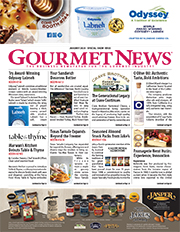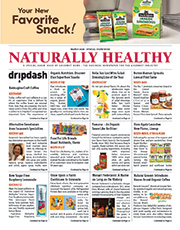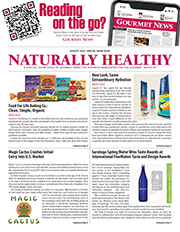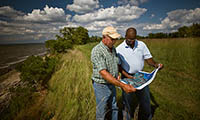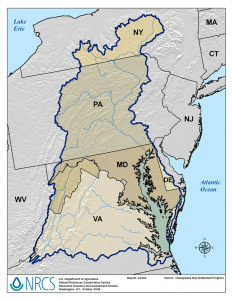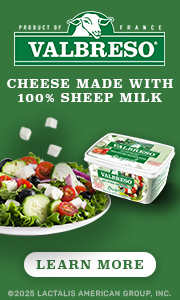At-home meals will continue to dominate in the year ahead, according to Kroger’s 2022 Food Trends Report, which attributes the popularity of home meals to convenience, affordability, social gatherings and the desire for sustainable and nutrient-rich food items.
Kroger 2022 Food Trends Report 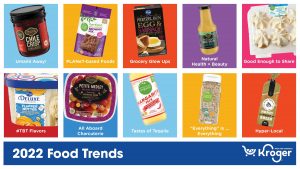 Kroger’s 2022 Food Trends Report contains 10 top trends that will influence consumer food purchases in 2022, while uncovering the “why” behind the trends. Overall, the trends can be broken down into emerging flavors, food item premiumization, and behavior shifts, all of which paint a picture of what consumers are sourcing and the ways in which they are preparing food in 2022. The findings show that consumers continue to have an increased passion for home-prepared meals, an awareness of both their own health and the planet’s, and a desire to seek comfort through food, which directly correlates to what will be on shopping lists this year.
Kroger’s 2022 Food Trends Report contains 10 top trends that will influence consumer food purchases in 2022, while uncovering the “why” behind the trends. Overall, the trends can be broken down into emerging flavors, food item premiumization, and behavior shifts, all of which paint a picture of what consumers are sourcing and the ways in which they are preparing food in 2022. The findings show that consumers continue to have an increased passion for home-prepared meals, an awareness of both their own health and the planet’s, and a desire to seek comfort through food, which directly correlates to what will be on shopping lists this year.
“Last year, even as many Americans returned to work and eased back into social gatherings, it became apparent that new habits were formed in 2020 and that they are here to stay – including cooking more at home. Customers are enjoying the convenience, affordability and just plain fun that comes from preparing meals at home,” said Stuart Aitken, senior vice president, chief merchant and marketing officer. “As at home meals remain a staple, Kroger is proud to provide customers with fresh food options that meet them where they are in the kitchen – whether that’s a fresh heat-and-eat meal on a busy school night or a four-course recreation from your favorite restaurant you’ve missed.”
“Unlocking these trends allows us to prepare for the year ahead, adapt our offerings, and innovate within Our Brands to ensure we continue to provide customers exactly what they need and want to delight themselves and their guests in 2022 and beyond,” said Juan De Paoli, vice president of Our Brands. “At-home meals hold major significance for our customers, and we take the importance of supporting these moments very seriously. The Our Brands team is endlessly striving to provide quality items that become the perfect backdrop as customers pridefully serve as they celebrate holidays, birthdays, milestones, anniversaries, and other get-togethers. We’re excited to unveil new offerings in the year ahead that will add a wonderful – and tasty – touch to these gatherings.”
Kroger’s top 10 trends for 2022 can be broken down into three categories: emerging flavors, item premiumization, and behavior shifts.
Emerging Flavors
1. Umami away! Umami is the taste that just makes things taste…better! Asian cuisine has long understood how ingredients high in umami help elevate other ingredients and round out flavors in a dish, but the umami trend is exploding across new products, multicultural cuisines, traditional cooking, and hybrid mash-ups.
2. “Everything” is … everything. ‘Everything’ seasoning is the trending flavor for 2022, as consumers top their favorite meals with a savory touch. Be on the lookout for ‘everything’ inspired foods from the bakery, to dips and even specialty cheeses to follow the trend.
3. Tastes of tequila. The biggest beverage taste of 2022 follows the umami trend – savory tequila. As consumers continue to host at home, tequila is a shareable spirit that opens the door to experimentation. With tons of mixes to explore and custom cocktails to create, consumers are using tequila as a base to delight guests with diverse palettes.
4. #TBT flavors. As consumers cook more at home, recipes from their childhood are delivering comfort and joy to people. Think of the nostalgic 90s comeback, but apply it to meals.
Item Premiumization
5. PLANeT-based foods. Consumers continue to focus on the health of the planet, not just through plant-based foods, but also by reducing their waste impact with upcycled ingredients and more recyclable packaging. Plant-based foods are now being purchased for indulgence, comfort, and nostalgia, rather than being solely known as the healthier choice for our bodies, while still helping consumers lower their carbon footprint. Customers can also recycle flexible plastic packaging from Kroger Our Brands products through our national partnership with TerraCycle.
6. Grocery glow up. Cooking at home isn’t just about convenience anymore; emulating restaurant and travel experiences at home with upleveled, “Instagram- able” meals is trending today. Consumers are raising the bar when recreating dining experiences at home and have been met with the premiumization of frozen food as well.
7. Hyper-local: Consumers are more conscious about the environmental and social impacts of their purchases and are making it a point to purchase products grown or made close to home. Alternative farms have created a way to get locally sourced, natural ingredients at their peak freshness – so everyone can support and enjoy their local farms – and in-store bakery items are providing consumers a chance to support small businesses.
Last year, Kroger launched Go Fresh & Local in 2021, which offers additional opportunities for fresh suppliers to become part of the organization’s supplier network. Last year’s winners will soon be appearing on shelves and include Maazah, Nona Lim, Queen Charlotte’s Pimento Cheese Royale, Simply Southern Sides, and Soupergirl. As part of Kroger’s Framework for Action: Diversity, Equity, & Inclusion plan, the organization is committed to increasing its spend with diverse suppliers to $10 billion by 2030 – after reaching $4.1 billion in spend in 2020, representing a 21% increase from the previous year.
Behavior Shifts
8. Natural health & beauty. Consumers are seeking out natural products to increase beauty from the inside-out. Eating for beauty and medicine is trending with food and beverage products that have health and beauty-boosting benefits are trending in 2022, with examples including fermented kombuchas, collagen-rich bone broths, antioxidants, probiotics, reductions of sugar, and additions of omega-3s.
9. Good enough to share. Whether you’re vegan, organic, gluten-free or otherwise, you can have your cake and share it too. Foods for specific diets or eating styles taste so good when everyone can enjoy them and no one is left out of a great eating experience.
10. All aboard charcuterie. Charcuterie has created a board craze, especially when it comes to breakfast and dessert. Boards have branched out beyond appetizers to offer consumers a variety of small portions to make the most out of every meal. As “boardies” start or end their day, breakfast and dessert boards open a world of flavors without the commitment to a single dish.
Subscribe now to Gourmet News!

